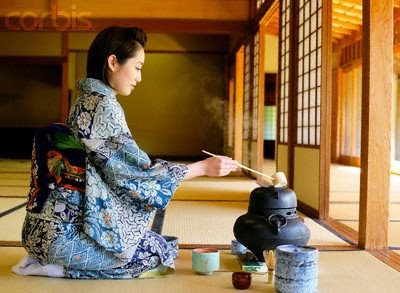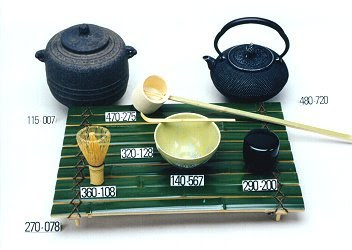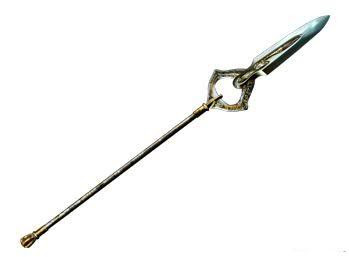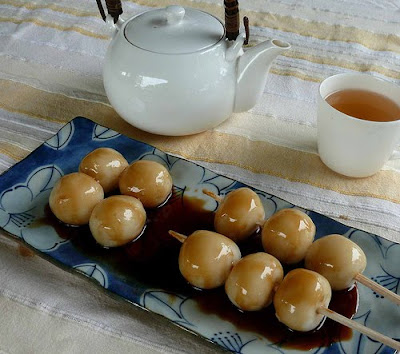In the year 1906, the famous painter named Okakura Tenshin (Kakuzo) published a book called The Book of Tea in the United States. Entering the early 20th century, the term sado or chadō began widely used in conjunction with the term cha no yu or Chanoyu.
Tuesday, February 23, 2010
History of Japanese Art of tea ceremony 2
In the year 1906, the famous painter named Okakura Tenshin (Kakuzo) published a book called The Book of Tea in the United States. Entering the early 20th century, the term sado or chadō began widely used in conjunction with the term cha no yu or Chanoyu.
Labels: Art of tea ceremony, japanese foods
Posted by iko at 5:43 PM
Monday, February 22, 2010
History of Japanese Art of tea ceremony 1
Among city residents interested in learning the tea ceremony was greeted with open arms by the flow Sansenke (three flow Senke: Omotesenke, Urasenke and Mushanokōjisenke) and fractional flow Senke.
The popularity of the tea ceremony led to the number of students became more and more that needs to be regulated by a system. Iemoto seido is born of regulatory requirements set hierarchy between teachers and students in the traditional arts of Japan.
Joshinsai (teacher-generation Omotesenke flow 7) and Yūgensai (teacher-generation Urasenke stream 8) and a senior student named Joshinsai Kawakami Fuhaku (Edosenke first generation) and then introduce a new method of learning the tea ceremony, called Shichijishiki. The tea ceremony can be learned by many students together with Shichijishiki method.
Various streams of tea trying to attract the interest of all people to learn the tea ceremony, so the tea ceremony has become popular throughout Japan. The tea ceremony is increasingly popular among the people is also an adverse impact on the tea ceremony which began seriously do not like playing.
At the end of the Tokugawa shogunate, perfecting principle Naosuke Ii Ichigo ichie (one life one chance). At this time, the tea ceremony which is now known as sado successfully enhanced by the addition of a real systematic procedures such as otemae (preparation techniques, penyeduhan, serving tea) and each school to set the basic style and abstract philosophy.
Entering the end of the Edo period, the tea ceremony matcha enhanced use of samurai became unpopular among the public because of the rigid etiquette. Society generally wants a tea that can be enjoyed with more ease. At that time, people began paying attention to the ordinary sencha tea enjoyed everyday. Tea ceremony which use also began sencha desirable people. Based on the request of many, Baisaō priest who is also known as Ko flow Yūgai create a tea ceremony with sencha (Senchadō) which became established and popular in literary circles.
Labels: Art of tea ceremony, japanese foods
Posted by iko at 11:41 PM
Art of tea ceremony
In general, the tea ceremony using matcha powder tea made from green tea are ground smooth. The tea ceremony is called matcha matchadō use, whereas when using a type of sencha green tea called senchadō.
Tea is not just poured with hot water and drunk, but as art in the broadest sense. The tea ceremony reflects the personality and knowledge covering a host of other life goals, ways of thinking, religion, appreciation of the tea ceremony equipment and how to put art in the tea ceremony room (chashitsu) and the general knowledge of art that depends on the flow tea ceremony that followed.
Labels: Art of tea ceremony, japanese foods
Posted by iko at 11:37 PM
Japanese Tea ceremony
The specially prepared by people who study the art of tea ceremony and enjoyed a group of guests at a special room for tea called chashitsu. The host is also responsible for preparing a pleasant situation for guests such as choosing a mural (kakejiku), flowers (chabana), and a ceramic bowl in accordance with the seasons and the status of an invited guest.
Labels: japanese foods
Posted by iko at 5:48 PM
Sunday, February 21, 2010
Japanese Sword from Late Kamakura
Labels: Traditional Japanese Weapons
Posted by iko at 9:25 PM
Japanese Sword from Mid-Kamakura
Labels: Traditional Japanese Weapons
Posted by iko at 5:20 PM
Saturday, February 20, 2010
Japanese Sword Late Heian to Early Kamakura
Labels: Traditional Japanese Weapons
Posted by iko at 8:58 PM
Firearms Japanese Army during World War II
But what is the secret behind your success? Because senjatakah advantage? I do not know, because it was the weapon used by the Japanese army at that time was the same weapon as they defeated the Russian army in 1905.
Apparently, the secret is the chrysanthemum symbol printed on each gun, so the Japanese soldiers burned the spirit to sacrifice themselves on the battlefield.
Below are interesting documentary about it, please enjoy ...
Labels: Japanese Weapon
Posted by iko at 7:38 PM
Jõkotõ (Jokoto)
Jõkotõ are straight Japanese swords with no curvature. They are usually constructed in the hira-zukuri and kiriha-zukuri styles. It is] thought that the shift from straight blades to Japanese swords with curvature happened around the mid to late Heian period (794-1184). This was during the mid 10th century: about the time Taira Masakado and Fujiwara Sumitomo rebelled against the government in the Johei (931-938) and Tengyo (938-947) eras. Blades before these are continental style blades called jõkutõ, and were brought to Japan from the Asian continent.
Examples of theseJapanese swords have been excavated from Kofun period tombs, and some still reside in the Shosoin Imperial Repository, Nara
Labels: Traditional Japanese Weapons
Posted by iko at 5:52 PM
The Japanese Sword; Historical Changes in Shape

1. Jõkotõ (Chokutõ) Ancient and Heian period
2. Late Heian to Early Kamakura
3. Mid-Kamakura
4. Late Kamakura
5. Nanbokucho
6. Early Muromachi
7. Late Muromachi
8. Aizuchi-Momoyama
9. Mid-Edo
10. Edo period Genroku era
11. Edo, Bakamatsu
12. Meiji and onwards
Labels: Japanese Weapon, Traditional Japanese Weapons
Posted by iko at 7:45 AM
Ame no nuhoko
Kanji characters used in American-no-nuboko in correctly pronounce ame-(no)-Numa-hoko, with Numa means "Marsh, swamp, or bog". This will be translated as "heavenly spear swamp".
Labels: Japanese Weapon, Traditional Japanese Weapons
Posted by iko at 7:36 AM
Kusanagi no Tsurugi

Kusanagi no Tsurugi is a legendary Japanese sword that is important for the history of Japan and is just as important as the history of the sword Excalibur for the British people, and is one of the three Imperial Regalia of Japan.
Kusanagi no Tsurugi was originally called Ama-no-Murakumo-no-Tsurugi ( "Sword of the Gathering Clouds of Heaven") but his name later changed to become more popular Kusanagi-no-Tsurugi ( "Grass Cutting Sword").
Labels: Japanese Weapon, Traditional Japanese Weapons
Posted by iko at 7:34 AM
Tonbogiri
Labels: Japanese Weapon, Traditional Japanese Weapons
Posted by iko at 7:22 AM
Wednesday, February 10, 2010
Clothing used by the ninja in the museum Iga-ryu Ninja
Labels: ninja japanese sword, Traditional Japanese Weapons
Posted by iko at 1:28 AM
Tuesday, February 9, 2010
Ninja comes from China
The origin of the ninja is not clear and difficult to ascertain. Historically, they have approximately the 14th century. In a detailed written record of the ninja activities that they are also known as shinobi "experts in the field gathering information," or "master of disguise and move quietly" that can penetrate enemy territory to observe every move and obtain confidential information without being detected. In the Sengoku period (Japanese wartime in the 15th century - 17), mercenaries and spies for the rent comes from the Iga and Koga in Japan, and from this clan and a lot of knowledge about the ninja is inferred.
Labels: ninja japanese sword
Posted by iko at 6:01 AM
Thursday, February 4, 2010
Taiyaki-Japanese snack food
Taiyaki is Japanese cakes shaped like a fish, and dough made from flour baked, then filled with red bean paste.
Taiyaki was first discovered in Japan in 1909, when one of the shops in the city of Minato, Tokyo, began to sell it, which is Naniwaya Souhonten store.
Taiyaki (鯛 焼き) is a Japanese cake shaped like a fish. This can be likened to pancakes or a waffle-shaped ... Taiyaki itself has a content of red bean paste made from sweetened azuki beans, Taiyaki can have other content that could lagy custard, chocolate, and cheese ..
Taiyaki is made of waffle batter is poured into a fish-shaped building. The contents included before finally ready Taiyaki baking. Then baked from both sides until they become golden brown color ..
Taiyaki was first created in the sweetshop "Naniwaya" in Tokyo in 1909 ... But right now Taiyaki can be found all over Japan, at the supermarket, and a very sure to find a festival in Japan "Matsuri" (祭
Labels: info, japanese foods, Japanese snack food
Posted by iko at 3:11 AM
Wednesday, February 3, 2010
Okonomiyaki is a Japanese food
Okonomiyaki is a Japanese food with ingredients flour diluted with water or dashi, plus cabbage, eggs, seafood or pork and fried on a flat pan called Teppan.
In Japanese, okonomi means "love-love" (which is preferred, desired) and yaki means "grilled" (the term "fried" is only used in Japan when foods are fried in oil very much). As the name implies, the top layer (topping) can be adjusted to Okonomiyaki tastes of people who want to eat.
Labels: japanese foods, Japanese snack food
Posted by iko at 2:56 AM
Dorayaki
Dorayaki a cake that comes from Japan. Dorayaki belong to the category of traditional Japanese cake (Wagashi) that looks a bit chubby round, consisting of two pieces of cake are held together with red bean paste. Dorayaki has a soft texture similar to Japanese cake called Kastela for dough containing honey.
Labels: japanese foods, Japanese snack food
Posted by iko at 1:05 AM
Tuesday, February 2, 2010
Dango
Dango is a Japanese cake shaped like a round little ball, and matured in a way steamed or boiled in water. Dango dough made from rice flour with water diulen or hot water. Kushidango is the name for a number of 3, 4, or 5 points Dango who stabbed into one with a puncture (Kushi) from bamboo. The number of grains in a single puncture Dango depends on the region in Japan.
Dango is a sweet made by adding sugar to the mixture, while Dango is not dipped in sweet sauce. Dango can also be eaten with a sprinkling of soy powder (kinako), inserted into the mitsumame (agar-agar is eaten with various canned fruit) or red bean paste is diluted with water. Apart from rice flour, Dango can also be made from flour or millet flour.
Labels: japanese foods, Japanese snack food
Posted by iko at 9:17 AM
Takoyaki is a Japanese snack food
Takoyaki is a Japanese snack food that is made traditionally used by Japanese families in a home. First made by the store Tomekichi Endo called Aizu in Osaka.
Baso round like, because it is also called Japanese grilled baso (tako = octopus; yaki = grilled) as a way of making fried in oil is not a lot, but baked in a mold half circles then inverted so that the shape of turning full circles.
Takoyaki is delicious eaten hot directly or as a side dish with rice. When in a state of cold, Takoyaki is more dense and chewy like a meatball
Labels: japanese foods, Takoyaki is a Japanese snack food
Posted by iko at 5:46 AM
Monday, February 1, 2010
Kimono History
Kimono usually made from Japanese silk-print in the technique "Yuzen". "Yuzen" printing technique that is repeated - so, pattern of the kimono is actually diulang2 (a kind monogram). Many people who think that the kimono is a kimono is painted and it contains a painting, but sebenernya wrong.
According to some sources, Kimono in the ancient times to be released parts per part for washing and sewn and spliced back time would be used, but the times have been eliminated this requirement.
Kimono for men there is also something for the ladies
Labels: Kimono, Traditional Japanese dress
Posted by iko at 10:56 AM
Iromuji is semiformal kimono
Labels: Kimono, Traditional Japanese dress
Posted by iko at 2:43 AM

































